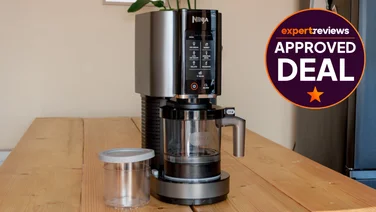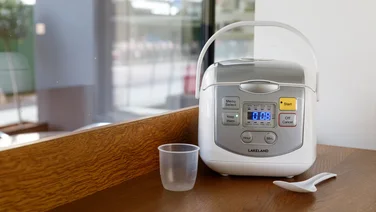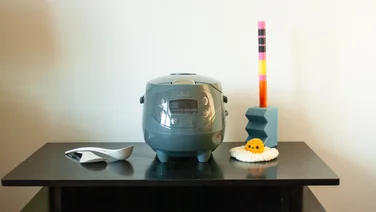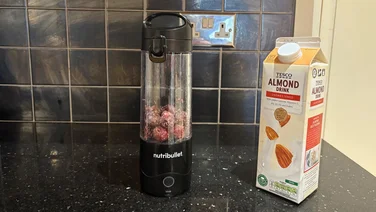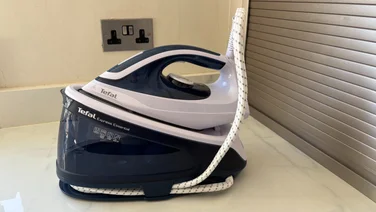To help us provide you with free impartial advice, we may earn a commission if you buy through links on our site. Learn more

When limescale builds up in your kettle, it takes longer to boil, which makes it more expensive to run, and can shorten its working life. It’s also unsightly and unappetising if it flakes off and ends up floating in your drinks. Unfortunately, limescale is a fact of life for more than half of all British homes and can affect even the best kettles.
Using a filter to reduce the mineral load in your tap water before boiling can help slow down the build-up of limescale in your kettle. So can installing a water softener. But what if it’s too late for that? And the limescale has already coated the element, the walls, and the base?
At that point, it’s time to take action. Cleaning limescale is something we should all do, especially if you live in a ‘hard water’ area. And, while it isn’t difficult, it does take a bit of time, particularly if you haven’t done it regularly. It may also involve the use of chemicals and hot water, so it’s advisable to take all necessary precautions to protect your skin and eyes from scalds, burns, and unwanted splashes before getting started. It’s also important to warn any other household members that the kettle is out of action until you’ve finished and thoroughly rinsed it through – you don’t want them making a chemical-laden cup of tea.
We’ll run through some of the best options for removing limescale from your kettle below. But first, we’ll explore what limescale is, where it comes from, and whether it’s a health risk.
READ NEXT: Our favourite water filter jugs for improving the taste of your tap water
What is limescale?
Limescale is a naturally occurring, hard deposit, which can build up in natural springs, as well as in appliances like kettles, coffee makers, and heating systems. It’s more common, and builds up more quickly, in areas supplied with ‘hard water’ – water that has picked up significant quantities of minerals while flowing through calcium-rich rocks like limestone, chalk, and sandstone.

In the UK, the areas with the hardest water form a rough triangle from Middlesbrough in the north, to Dover in the southeast, and Lyme Regis in the southwest, with another pocket between Birmingham and the Peak District. Generally, the further north and west you go, the ‘softer’ the water becomes, and the less pronounced the limescale problem will be.
Why should you descale your kettle?
Descaling your kettle takes a little time, but not much money, and it can save you cold hard cash in the long run – a furred-up appliance will take longer to boil, which will burn more electricity. And with energy prices escalating, that can only be bad news.It’s also bad news for the environment, as kettles are power-hungry devices to begin with – some use 3kWh elements to boil water more quickly, while others, that only have 2kWh elements, take longer and so consume, on average, a similar amount of energy – and with a large proportion of the UK’s energy needs still being met through the burning of fossil fuel (over 42% at the time of writing), every watt you use will pump more carbon dioxide into the air.
You may also need to replace a limescale-caked kettle sooner than you intended. According to several sources, including kitchen appliance designer Kutchina, “the average lifespan of a good quality electric kettle is 4 years to 5 years maximum”. If you’re putting yours under strain by forcing it to work longer and harder, those figures might prove optimistic.
How does limescale build up in a kettle?
When you boil hard water, it separates. The water turns to steam at 100 degrees Celsius – precisely the temperature most kettles aim for – but the minerals in it don’t. They require a much higher temperature to boil away, so they remain in the vessel throughout and, as the kettle cools, they re-form to create calcium carbonate. This is what coats the element and interior of the kettle.
Is limescale harmful?
“Limescale, in small quantities, does not have any bad repercussions on your organism,” says Procter & Gamble. “On the contrary: most mineral waters you find in stores have minerals like magnesium and calcium that are good for your body.”
The minerals responsible for any limescale in your kettle were already present in the water when it was running through your plumbing. So, if you drank the water straight from the tap without boiling it first, the same chemicals causing the limescale problem would still be present, they just wouldn’t be so obvious.
That said, you should still get into the habit of throwing out stale water. Only boil as much water as you need – you’ll save money by not running the kettle for longer than is necessary, and will minimise limescale build-up by not exposing the element to large quantities of water-based minerals – and avoid reboiling water whenever possible.
READ NEXT: Our favourite rapid-boil, quiet and smart kettles
How to remove limescale from your kettle
There are several ways to remove limescale from a kettle and, depending on the level of limescale present and the model of kettle you’re working with, finding which works best may require a little trial and error.
How to remove limescale using lemon

This natural solution doesn’t rely on any chemicals, so it’s both kind to the environment and inexpensive. Thinly slice a lemon and drop the slices into your kettle. Fill the kettle to the top of the area affected by limescale (but not above any maximum fill guide, or below any minimum), then boil it and allow it to cool without pouring out the water or removing the lemons. Once it has cooled, boil it again, allow to cool, then pour away the water and rinse it out.
You can also use bottled lemon juice (but not lemon squash!) if you don’t have a lemon handy – add a couple of tablespoons to the kettle in place of the lemon slices, and, again, top up the water to cover the area affected by limescale. Boil and cool the water twice, then rinse the kettle thoroughly to avoid any lingering taste of lemon affecting the next few rounds of drinks. If this doesn’t shift the limescale either increase the ratio of lemon to water, or try an alternative solution.
How to remove limescale using vinegar
White vinegar can be used for cleaning a wide range of non-porous surfaces, including many kitchen worktops and sinks (but not if they’re made from wood, stone, cast iron, or stainless steel), glass, shower screens, and limescale-caked kettles. The formula is simple: without straying outside the minimum or maximum fill lines, top up the kettle to the height of the limescale with equal parts water and white vinegar. Boil the kettle, then allow it to cool before pouring away the contents and rinsing it to avoid any aftertaste.
When we say white vinegar, we don’t mean the white wine vinegar that you can use to make salad dressing, but the kind of white vinegar sold specifically for cleaning. You can pick this up fairly cheaply, with Amazon selling ten litres of its best-selling brand (in two 5l bottles) for £10.
How to remove limescale using bicarbonate of soda

Bicarbonate of soda can also remove limescale if you first use it to create a mildly abrasive gloop. The brains behind WD-40 recommend mixing three tablespoons of bicarbonate of soda with one tablespoon of water: “The mixture should be a little pasty. Then, apply it to the stain to be treated and allow it to dry. With a brush, rub the treated area until removed.”
Naturally, only put your hands inside or on the kettle if it is absolutely cold. We also recommend using a toothbrush to clean around and as far under the element as possible.
If you’d rather not scrub, you can add a teaspoon of bicarbonate of soda to 500ml of water and boil several times, allowing it to cool between each boiling. Then empty and rinse thoroughly with cold water.
Bicarbonate of soda – or sodium bicarbonate – is also known as baking soda, but you don’t have to buy it in small tubs from the supermarket baking aisle. It’s widely available in larger quantities, in both cash-and-carry stores and online, with Amazon selling a 3kg tub of baking soda for £9.
How to remove limescale using pre-mixed solutions
Obviously, lemon, vinegar, and bicarbonate of soda aren’t designed specifically for tackling limescale and, if your kettle is too caked for them to cope, you’ll need to turn to a product that is. Extra care should always be taken when using chemicals, as they can be corrosive and may cause harm if they come into contact with your eyes or skin. Be sure to wear the appropriate protective clothing, and try not to splash chemicals onto work surfaces or the exterior of your kettle, especially if it’s painted.

All Purpose Oust Descaler is one of the best-known branded options, and can be used for shower heads, steam irons, coffee makers, and kettles. When using it to clean a kettle, half-fill the jug with water and boil it. Once boiled, unplug it and place it in an empty sink – in case of spills – then slowly add the contents of a single sachet of Oust. Leave it for ten minutes to do its work. If there is still evidence of limescale in the kettle, switch it on to reheat until the solution starts to fizz, but don’t allow it to boil or you risk it overflowing the spout or lid. Empty the kettle and rinse it, boil a fresh kettle of water without any Oust, discard it, and repeat. For heavily scaled kettles, it may be necessary to use two sachets at once.
Kilrock Slam Descaler can also be used on shower heads, steam irons, coffee machines and kettles, in a very similar manner to Oust. Half-fill the kettle with water and boil it. Then unplug it and place it in an empty sink. Pour in a sachet of Slam Descaler (two sachets for heavy scaling) and leave it to stand for eight minutes. If this doesn’t get rid of all the scale, reheat the water so the solution fizzes but, as with Oust, don’t allow it to boil. Pour away the solution, then rinse the kettle with clean, cold water. Refill it with fresh water, boil it, empty it, then rinse it again.
READ NEXT: Protect your pipes and appliances from damage with our best limescale removers
Ongoing limescale removal
Once you’ve removed as much limescale as you can, it’s worth considering how you can continue tackling the problem between cleans. That way you can reduce the amount of work you need to do next time.
A kettle descaler ball, like the Chef Aid Stainless Steel Doughnut, can live in your kettle permanently. It won’t rust, and is surprisingly robust for something that looks like a tangled ball of fuse wire. The physics behind it is refreshingly simple, too. Rather than use chemicals or natural liquids, the doughnut bounces around inside the kettle while it’s boiling, giving the insides a gentle scrub, and collecting the minerals that would otherwise be attracted to the surfaces and element.
It’s a low-cost, low-tech, passive solution with which we’ve had very good experiences. In a stove-top kettle, it reduces the frequency of manual cleaning to once every few months – or even less often when filling the kettle from a water filter jug, as it’s now been seven months since our kettle’s last descaling, and it’s still not yet in need of attention. In the interim, every couple of months, we wait for the kettle to go cold, remove the doughnut, and rinse it in the kitchen sink.







